Exploring the Moon: India's Historic Chandrayaan-2 Mission
Written on
India has embarked on a significant journey to the Moon, successfully launching its first mission to the lunar surface on July 22. This ambitious endeavor includes an orbiter, a lander, and a rover. If accomplished, the Indian Space Research Organisation (ISRO) will make India the fourth country to land a spacecraft safely on the Moon.
The Chandrayaan-2 spacecraft was launched from the Satish Dhawan Space Centre SHAR located at Sriharikota, on India's southeastern coast, at 2:43 PM IST (5:13 AM EDT). An audience of 7,500 people witnessed the launch live from the center.

“Today marks a significant milestone for Space Science and Technology in India. I am thrilled to declare that the GSLV MkIII-M1 has successfully placed Chandrayaan-2 into orbit,” stated ISRO Chairman Dr. K. Sivan.
The GSLV MkIII-M1 launch vehicle, equipped with two S200 solid-fuel boosters, executed its mission flawlessly, delivering its payload into space. The Chandrayaan-2 spacecraft has deployed its solar array and is currently orbiting Earth, preparing for its lunar journey.
This is Many Steps Above Parallel Parking…
The spacecraft will remain in Earth’s orbit until it’s ready to embark towards the Moon. After entering its Lunar Transfer Trajectory, thrusters will slow it down, allowing the Moon's gravity to capture it. Subsequent orbital maneuvers will adjust its trajectory until the spacecraft orbits in a near-perfect circle, approximately 100 kilometers (63 miles) above the lunar surface.
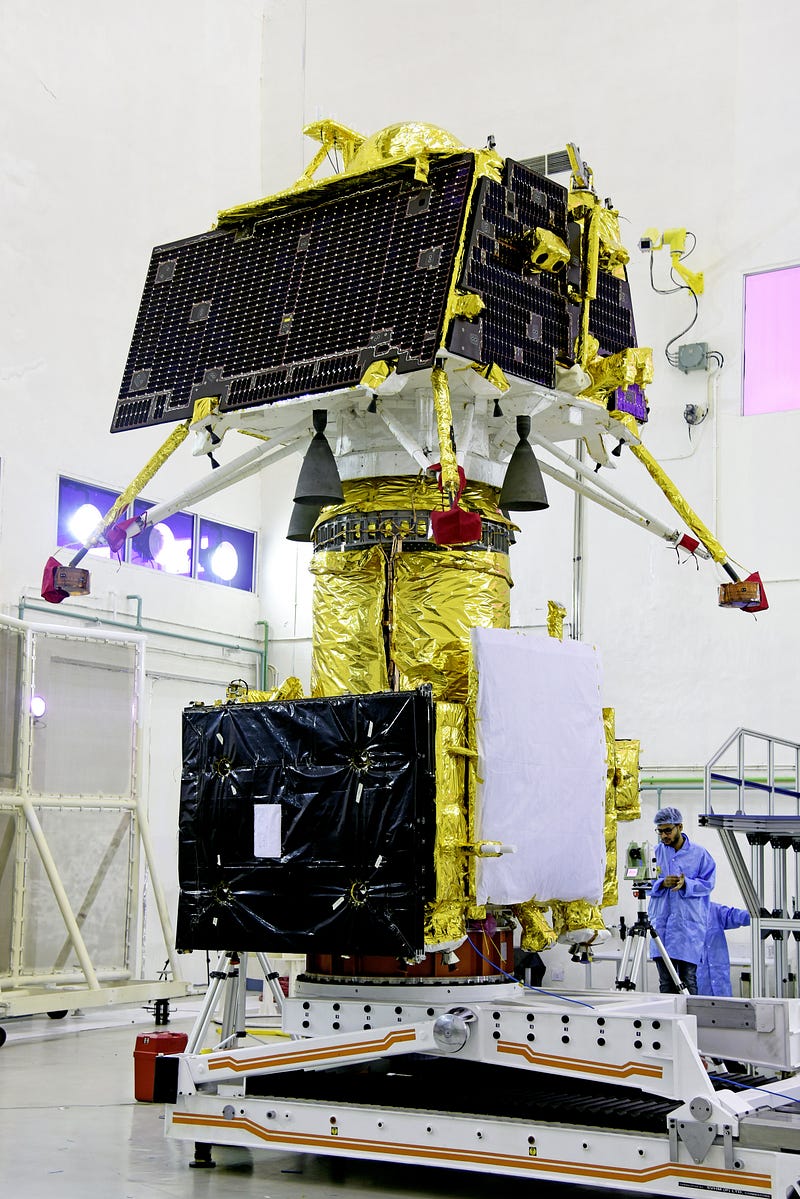
“On landing day, the Vikram lander will detach from the orbiter and execute a series of complex maneuvers involving rough and fine braking. The landing site will be imaged in advance to identify safe zones,” reports ISRO.
The braking maneuvers will transition the orbiter from a circular orbit 100 km above the Moon to an elliptical path, approaching as close as 30 km (18.6 miles) to the lunar surface. While orbiting, the orbiter will observe the Moon using eight scientific instruments.
A Day Trip that Lasts a Fortnight
On September 7, 2019, engineers plan to land Vikram between two craters, Manzinus C and Simpelius N, located at 70 degrees south latitude in the Moon's polar region, where water ice may be present in dark craters.
Vikram carries three experiments, including the Radio Anatomy of Moon Bound Hypersensitive ionosphere and Atmosphere (RAMBHA), which will study plasma at the lunar surface under various solar conditions.
Chandra’s Surface Thermo-physical Experiment (ChaSTE) will utilize sensors and heaters placed 10 cm (four inches) into the lunar crust to measure heat movement.
The Instrument for Lunar Seismic Activity (ILSA) will detect moonquakes in the landing area with a three-axis seismometer.
While on the Moon, the lander will communicate with operators on Earth, its companion rover, and the orbiter. The 1,477-kilogram (3,250-pound) lander is equipped with a combination of active and passive experiments to enhance our understanding of the Moon, operating on 650 Watts of electricity—similar to that consumed by a vacuum cleaner or slow cooker. The lander honors Dr. Vikram A. Sarabhai, the founder of India’s space program.
Here, Rover! Here, Rover!
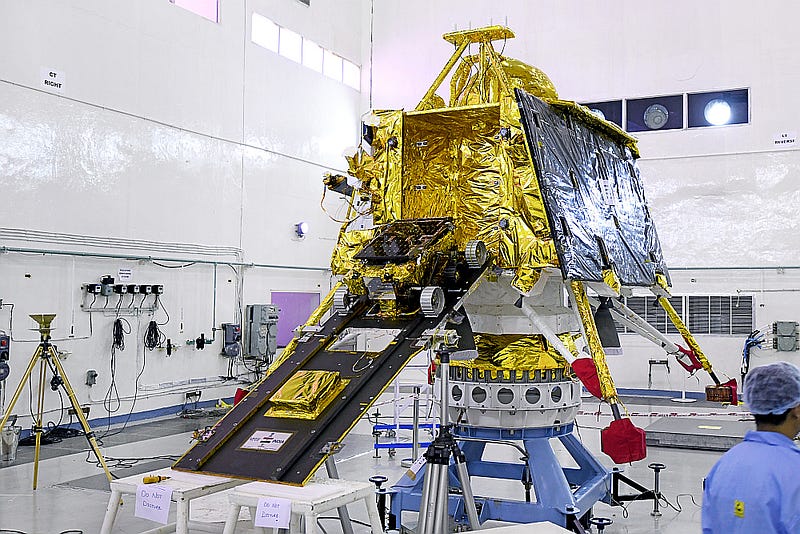
Once safely landed, the Pragyan rover will be deployed from the lander to carry out experiments on the lunar surface. This robotic explorer will analyze the mineralogy, chemical composition, and topography of the Moon, as well as its thin atmosphere.
The Alpha Particle X-ray Spectrometer (APXS) will analyze the lunar surface composition using radioactive Curium (244) to emit alpha particles and X-rays.
The Laser Induced Breakdown Spectroscope will fire lasers at the lunar surface to measure the radiation released as plasma dissipates.

Meanwhile, the Laser Retroreflector Array (LRA), a passive device on the rover, will aid researchers in studying the Earth-Moon system and the Moon's interior.
The 26-kilogram (57-pound), 50-watt rover will navigate its landing site with six wheels, using two scientific instruments to gather data, which will be relayed to the lander for transmission to Earth.
The rover is designed to travel 500 meters (1,650 feet) before lunar night falls, rendering both the rover and lander inoperable. The name Pragyan means ‘wisdom’ in Sanskrit.
Rocket Away, Robot Bird…
On July 15, 2019, engineers identified a technical issue with the launch vehicle, delaying the launch by a week to resolve the problem.
The three-stage rocket, developed by ISRO, comprises two solid rocket boosters, a core liquid-fuel booster, and a cryogenic upper stage. It is capable of lifting payloads of 10 tons into low-Earth orbit or four tons into Geosynchronous Transfer Orbit (GTO).
An Eagle Eye on the Moon
While the lander and rover explore the Moon, the Chandrayaan orbiter will transmit data back to Earth for analysis.
For nearly a year following the surface crafts' silence, the orbiter will continue to provide scientific data.
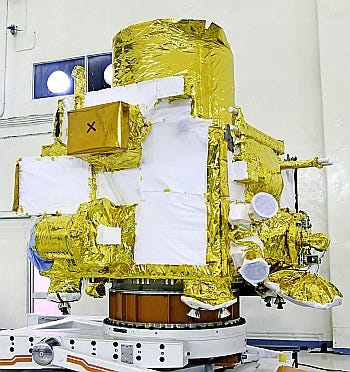
The Terrain Mapping Camera 2 (TMC 2) will conduct surveys to create a 3-D map of the lunar surface, tracking features larger than five meters (16 feet).
The Orbiter High Resolution Camera (OHRC) will assist during the lander/rover touchdown procedures by searching for landing hazards, with a resolution of 0.32 meters (13 inches).
Once landed, the Dual Frequency Synthetic Aperture Radar (DFSAR) will generate high-resolution maps of the Moon’s polar regions, estimate the depth of the lunar regolith, and assess water availability.
Previously thought to be barren, the Moon is now known to harbor water ice at its poles and possess a thin atmosphere.
The Imaging IR Spectrometer (IIRS) will measure solar radiation emitted from the Moon, detect volatile materials, and search for water evidence.
The CLASS spectrometer will analyze X-rays for elements like silicon, titanium, and sodium in the lunar crust as they interact with solar radiation. The Solar X-Ray Monitor (XSM) supports this experiment. The CHACE 2 spectrograph will investigate the Moon’s exosphere—the outermost layer of its atmosphere.
Lastly, the Dual Frequency Radio Science experiment (DFRS) will broadcast continuous radio signals to study electron movement in the Moon’s atmosphere over time.
India in the Space Age
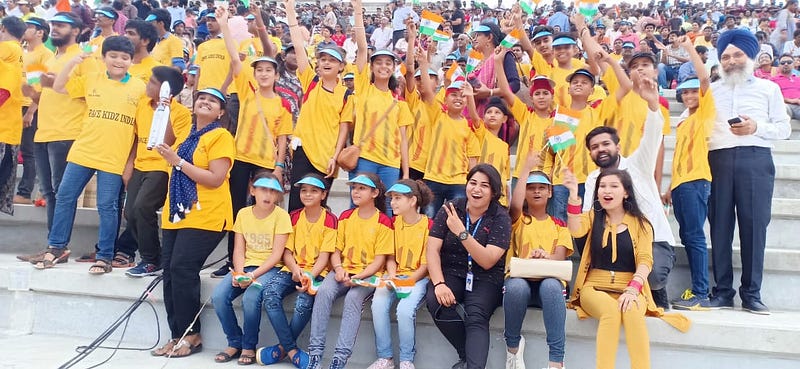
This launch represents the second attempt by the world's most populous nation to send a spacecraft to the Moon, marking its first mission with a lander. If successful, India will join the ranks of the Soviet Union, the United States, and China as the fourth nation to land on the lunar surface. Up to this year, only the U.S. and Russia had achieved this milestone, while an Israeli attempt in April to soft-land a spacecraft on the Moon ended in failure.
Once dominated by only two major powers, space exploration is now expanding to include various nations, private companies, and affluent individuals, all aiming to send humans to the Moon.
NASA has expressed its plans to land human explorers, including the first woman, on the lunar surface by 2024.
While NASA celebrated the 50th anniversary of Apollo 11, SpaceX founder Elon Musk indicated to Time Magazine that his company might land a person on the Moon within two to four years.
“Certainly, with an uncrewed vehicle, I believe we could land on the Moon in two years. Then, perhaps within a year or two of that, we could send crewed missions. I would say four years at the latest,” Musk remarked.
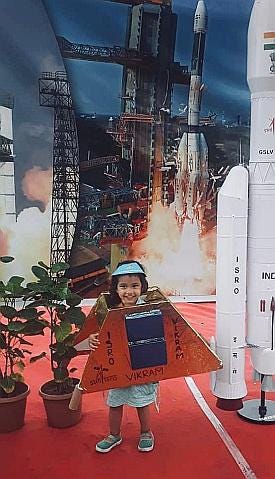
The Chandrayaan-2 mission is intended to demonstrate India's capability to conduct a lunar mission from start to finish. It also provides ISRO with an opportunity to test various facilities on Earth, including the Indian Deep Space Network, Spacecraft Control Centre, and Indian Space Science Data Centre.
The Chandrayaan-1 orbiter, launched on October 22, 2008, successfully entered lunar orbit and conducted multiple experiments before communication was lost on August 29, 2009, after over 3,400 orbits around the Moon.
Both the lander and rover are expected to operate for one lunar day (14 Earth days), while the orbiter has a mission life of one year.
Did you enjoy this article? Subscribe to The Cosmic Companion Newsletter!